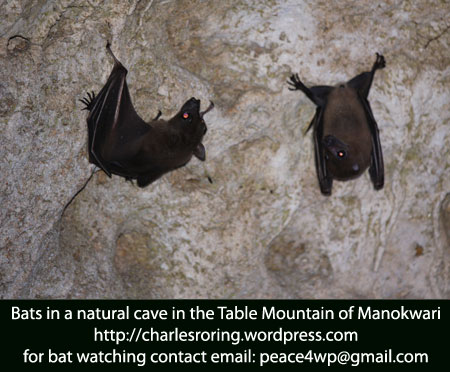In recent months, the number of foreign tourists or travelers who come to Manokwari, the capital town of West Papua province in Indonesia is increasing. They fly with domestic airlines such as Batavia Air, and Merpati from Jakarta to this town. There are various tourist attractions which they can visit when staying in Manokwari.
Cheap Hotel in Manokwari
First, before I explain about the interesting places which you can see, I have to recommend a cheap hotel which is an affordable accommodation with good facilities. The name of the hotel is Penginapan Kagum. The cost per room is around 18 US dollars per night. It is located on Brawijaya Street behind Xavier bookstore. If you are one of the tourists who wants to come to Manokwari, when you have arrived at Rendani airport, ask the taxi driver to bring you to the hotel. The manager's name is Miss Ivanna Roring. Her mobile phone number is 081 28307331. You had better call or send an SMS to her to arrange for a room and the duration of your stay in this town. After you have put or bags in Penginapan Kagum, you will begin to explore the town and its surrounding places. If you want to visit the following places, as a guide I can accompany you. My cell phone number is Charles Roring: 081332245180. Here are the places which I recommend:
 Table Mountain of Manokwari
Table Mountain of Manokwari
This is the place near the town where there is a well protected tropical rainforest. Inside the forest a lot of species of trees grow. The trees are big and tall, many with diameters of more than 1 meter. Various species of orchids and tropical flowers can also be found thriving on the branches of the trees and on the ground. When we walk deeper into the forest, we will be able to see birds such as Kakatoe, Hornbill, KumKum and Lory playing and singing. If we are lucky, we will be able to see Kuskus, Soa Soa and Snakes. The beauty of the forest is not only seen at the tree but also on the ground. Various tropical mushrooms with beautiful colors and forms live in this jungle. The journey into this forest is not complete if you have not visited the caves.
 The Caves of of Table Mountain
The Caves of of Table Mountain
The caves in Manokwari are devided into two types, the man-made ones (which were built during the World War II) and the natural caves. There are four natural caves in this mountain. I can guide you to find them and explore the interior. Inside the caves you can see bats, lizards and various colour of crystal stones. The caves in the table mountain is wet and slippery so, when we go in there, we will need lamps. P
Bats Hanging on Trees
Some tourists like to explore the forest of Table Mountain at night because they will have a chance to see more animals, one of the types is bat. Bats in tropical region live in caves and in trees. The small bats live in caves whereas the bigger ones live hanging on brances of trees. To take photos of the bats you will need digital photo camera or video recorder that is equipped with flash lights or infra red light.
Islands in the Dorey Bay and off the northern coast 
Mansinam and Lemon islands are visited by most of the tourists who come to Manokwari of West Papua Indonesia. But I will guide or accompany you to other islands such as Raimuti island and Kaki island. This Raimuti island provides interesting underwater coral reef environment with colorful fish which you can see when snorkling around it. Kaki island is the place where Turtles like to come up to the beach to lay their eggs there. You will need special watertight digital camera if you want to snorkle and take photos of its beautiful coral reef.
Manokwari artists
Inside the Manokwari town, there are a number of artists which you can visit. I can accompany you to see artists who make beautiful paintings of Papua's nature and animals such as the paradise birds and the Kasuari. Or if you are interested more in wood carvings, then the house of Mr. Awom or Mr. Yenno should be visited. An old woman Ms. Fonataba is my recommendation for you if you want to see beautiful hand made woven clothes.
There are still many other interesting places which I can guide you to visit. I will write more about them later. If you want to contact me, this is my email:
peace4wp@gmail.com and my cell phone number: 081332245180. Manokwari is a beautiful place worthy of your visit.









